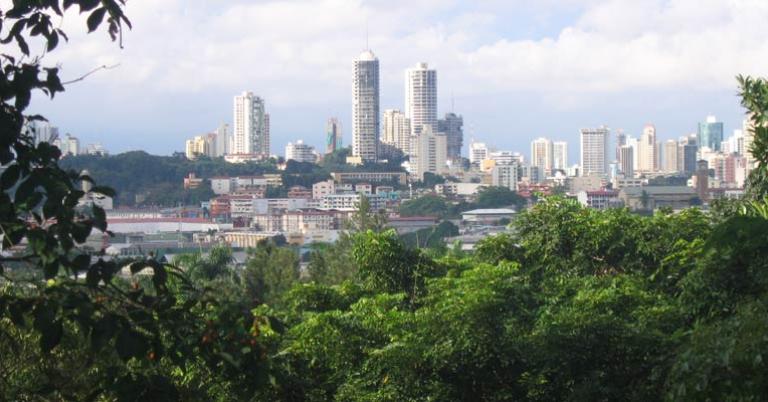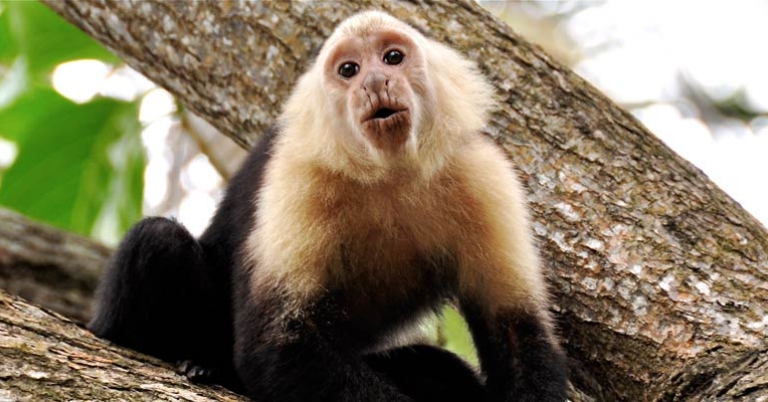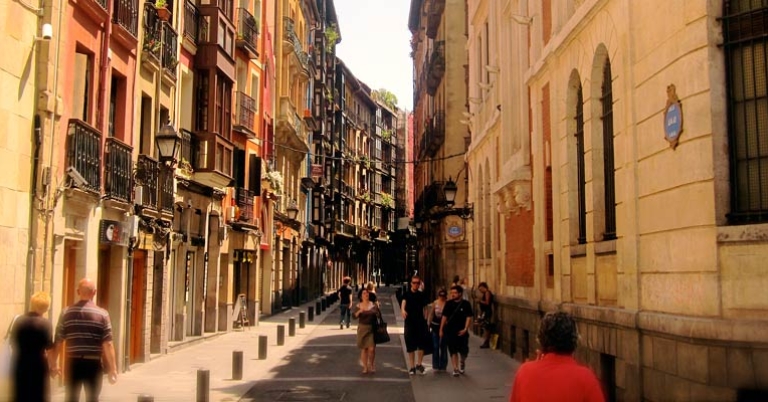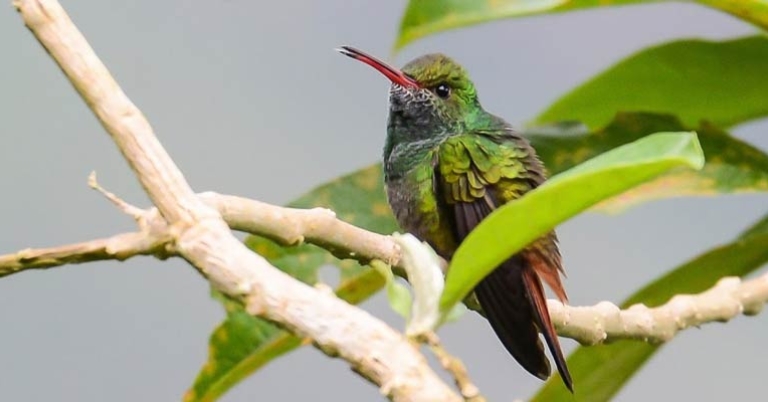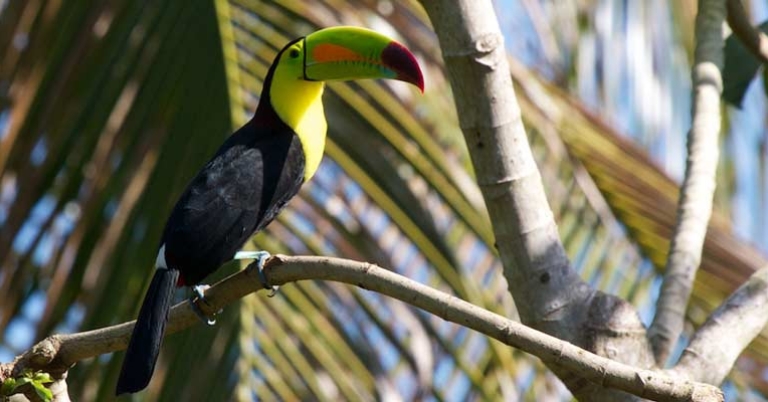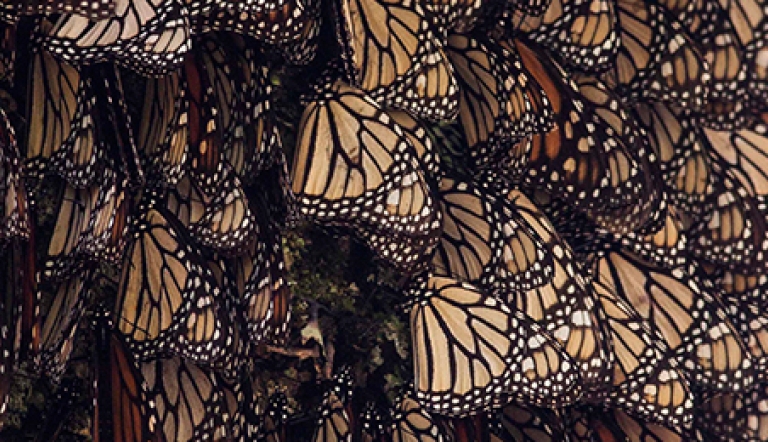Panama | Connecting Hemispheres in Panama: Birding and Culture with Cable Natural History Museum
About this trip
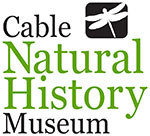 Journey to the “Crossroads of the World” for an informative look at Panama’s fascinating history, culture, and natural beauty with Cable Natural History Museum. Explore the Pacific side of the country as you learn about the engineering marvel that is the Panama Canal. Go beyond the canal and delve deeper into the country’s cultural identity, spending time with an indigenous community and local artisans and reflecting on the effects of colonization in the capital’s historical districts. Meanwhile, examine how Panama’s unique geography played a vital role in shaping the ecology of the Americas and visit many well-known birding trails, woodland habitats, tropical rainforests, Pipeline Road, and the Panama Bay Mudflats. When it comes to birds, Panama boasts the highest diversity of species in Central America; the country’s advantageous location at the convergence of two continents makes it the prime respite for migratory birds from both North and South America.
Journey to the “Crossroads of the World” for an informative look at Panama’s fascinating history, culture, and natural beauty with Cable Natural History Museum. Explore the Pacific side of the country as you learn about the engineering marvel that is the Panama Canal. Go beyond the canal and delve deeper into the country’s cultural identity, spending time with an indigenous community and local artisans and reflecting on the effects of colonization in the capital’s historical districts. Meanwhile, examine how Panama’s unique geography played a vital role in shaping the ecology of the Americas and visit many well-known birding trails, woodland habitats, tropical rainforests, Pipeline Road, and the Panama Bay Mudflats. When it comes to birds, Panama boasts the highest diversity of species in Central America; the country’s advantageous location at the convergence of two continents makes it the prime respite for migratory birds from both North and South America.
Highlights
- Uncover Panama’s role as an international trade center and land of cultural diversity in the historical district of Casco Viejo and the historical ruins of Panamá Viejo.
- Discover the skills of talented local artisans and learn about their process of making Panama’s national dress, accessories, and drums.
- Learn about the geological origins, natural history, and ecological effects of the Panamanian isthmus at the Frank Gehry-designed BioMuseo.
- Scale the Panama Rainforest Discovery Center’s 130-foot tower for the chance to see upper canopy species, including the coveted Blue Cotinga.
- Explore the Soberanía National Park, home to an impressive list of 525 bird species, and hike the world-famous Pipeline Road.
- Visit a sloth rescue center, meet animal ambassadors and learn about wildlife rescue, rehabilitation, and release during canal expansion.
Meet your leader
 Mollie Kreb-Mertig
Mollie Kreb-Mertig
Mollie Kreb-Mertig has a passion for fostering deep connections between people and the natural wonders of Wisconsin’s Northwoods. In her role as the Curator Naturalist at the Cable Natural History Museum in Cable, WI, she leads nature education programs in the field and classroom, develops educational exhibits, and manages a professional collection of natural history specimens. Having previously traveled to neighboring Costa Rica, Mollie looks forward to extending her travels into Panama as your trip leader and facilitator of broadened connections with nature and culture.
$3,350
Per person
About this price
Land cost only. Does not include round-trip airfare to and from destination.
Single room supplement $600
What makes us different
Rich content
Carbon offsetting
Wildlife up-close
Service anytime
Culture in context
Top birding guides
Daily Itinerary
Print ItineraryPanama City
Panama City
El Valle de Anton
El Valle de Anton
Chitre
Chitre
Gamboa
Gamboa
Gamboa
Depart
Pricing
Print Pricing$3,350
Per person
About this price
Land cost only. Does not include round-trip airfare to and from destination.
Single room supplement $600
What's Included
- Accommodations with private bathrooms
- Activities and meals as mentioned in itinerary
- Arrival and departure transfers based on individual flight schedules
- Carbon Offset
- Full time guide for the duration of your program
- Non alcoholic beverage with meals
- Private transportation and driver for the duration of the program
- All Tips except Guide and Driver
What's Not Included
- International airfare
- Items of personal nature
- Travel Insurance
- Trip cancellation coverage
- Tips for guide and driver
Pricing Details
A $500 per person deposit and enrollment form is due to hold your space on this trip. This deposit is refundable 95 days prior to departure excluding a $300 cancellation fee. Cancellations after this date are non refundable.
Holbrook Travel strongly recommends the purchase of travel protection for medical emergencies while traveling and to protect your investment. Please note the purchase of Cancel for Any Reason Coverage or to exclude pre-existing conditions with Trip Cancellation coverage may require policy purchase within 10-14 days of your initial deposit, depending upon the provider.
Single room supplement $600
Final payment due date: September 07, 2023
Travel Info
Print Travel InfoEntry & Exit Requirements
U.S. citizens must have a valid passport to enter Panama. Passports must be valid for at least three months after the date of entry.
A visa is not required for visits up to 180 days.
If you are not traveling with a U.S. passport, please check with the Panamanian Embassy for the requirements based on your nationality.
U.S. citizens entering Panama by commercial flight may be charged a $5 tourist fee if Holbrook does not make your air reservations.
Health Information
IMMUNIZATIONS
The Centers for Disease Control recommends that all travelers be up to date on routine vaccinations such as measles-mumps-rubella (MMR) vaccine, diphtheria-pertussis-tetanus vaccine, varicella (chicken pox) vaccine, and your yearly flu shot before every trip.
There are no vaccinations required for entry into Panama unless you are arriving from a country where yellow fever transmission is a risk.
Yellow fever is a risk in certain parts of Panama, primarily east of the area surrounding the Panama Canal. The CDC recommends the yellow fever vaccine if you are traveling to these areas. Consult your physician for more information.
Though not required, the CDC recommends inoculation against hepatitis A, hepatitis B, and typhoid for most unvaccinated travelers to Panama.
Please consult your physician for additional information and recommendations based on your individual circumstances.
MALARIA
The CDC warns that travelers to certain areas of Panama may be at risk for exposure to malaria. Malaria is caused by a parasite found in Anopheles mosquitos, which are active from dusk until dawn. There is no vaccine to protect against malaria. If you are visiting areas where malaria is present and choose to use an anti-malarial drug, as recommended by the CDC, see your doctor for a prescription. To protect against mosquitos, cover exposed skin with lightweight, long-sleeved shirts and pants, consider treating clothes with permethrin, and use an insect repellent containing an active ingredient like DEET or picaridin.
DENGUE FEVER & OTHER INSECT-BORNE ILLNESSES
Locally transmitted cases of dengue fever have been reported in Panama. Local transmission means that mosquitoes in the area have been infected with dengue and are spreading it to people. In addition, locally transmitted cases of Zika virus, leishmaniasis, and other insect-borne illnesses have previously been reported in Panama.
The CDC recommends that travelers to Panama protect themselves against insect bites. As a precaution, the CDC advises women who are pregnant to consider postponing travel to any area where Zika virus transmission is ongoing.
SUN EXPOSURE
The effects of the sun can be damaging to the eyes and skin. Spending time outdoors exposes you to the sun’s harmful ultraviolet (UV) rays, even on cloudy days. To protect yourself from the sun, use a broad spectrum sunscreen of at least SPF 15, protect skin with clothing, wear a wide-brimmed hat and sunglasses, and drink plenty of fluids.
Resources
Print ResourcesSuggested Packing List
Everyone has personal preferences when it comes to packing; for this reason, the information below is offered as a general guide and not a definitive list. You know yourself best: Use your discretion and pack what you think will serve you, based on your personal preferences and specific itinerary. You may find many of these items in our Gear Store.
CLOTHING
Casual, comfortable clothing is suitable for most activities. You may wish to bring a slightly nicer outfit or two (eg sundress, polo shirt) if your itinerary includes dinners out or more formal activities. Bring enough clothing suitable for the length of your program. If you prefer to pack light, note that many hotels offer laundry services at additional cost. If you plan to hand-wash items, remember that humidity may delay drying time. Pack clothing that can be worn in layers to adapt to weather changes throughout the day. Clothing that wicks away moisture and dries quickly is recommended.
- A combination of short-sleeved and lightweight, long-sleeved shirts for sun and mosquito protection
- Shorts
- Lightweight, quick-drying long pants for sun and mosquito protection; jeans tend to be uncomfortable in hot and humid conditions, but are fine in the cooler highlands.
- Undergarments
- Sleepwear
- Lightweight jacket or sweater/sweatshirt (or heavier weight if visiting high-elevation areas)
- 1-2 bathing suit(s) for the beach, if applicable, plus many hotels have pools
- Socks – Bring extra pairs. If your itinerary indicates muddy hikes with rubber boots provided on-site, pack a few pairs of knee socks to prevent blisters.
- Shoes – Consider your specific itinerary when choosing footwear. For most programs, you’ll likely want at least one pair of comfortable, closed-toe walking or hiking shoes suitable for forest hikes and walking over cobblestones or other uneven terrain. Sturdier hiking boots may be appropriate for more rugged itineraries. In addition, many participants opt for a pair of sturdy sport-strap sandals (e.g. Keens, Tevas, or similar) and/or casual flip-flops or sandals. If you’re whitewater rafting or visiting the beach, you may also want a pair of aqua socks, reef walkers, or water shoes.
- Lightweight rain jacket, hooded poncho, and/or windbreaker
- Visor or wide-brimmed sun hat
- Bandana, scarf, or Buff-style headwear
MISCELLANEOUS
Remember to pack valuables such as your passport, cash/credit cards, and medications in your carry-on luggage.
- Personal toiletries
- Passport and photocopies of all travel documentation
- Personal insurance card and travel insurance information
- Money – ATM/credit card, traveler's checks, and/or cash; small bills in good condition are recommended
- Prescription medicines (if applicable), with a copy of the prescription
- Yellow fever certificate (if required; only if arriving from a country where yellow fever transmission is a risk)
- Sunglasses with strap
- Small day pack for hikes and excursions
- Flashlight and/or head lamp
- Travel alarm clock or inexpensive waterproof wristwatch with alarm – Not all hotels provide alarm clocks.
- A pocket calculator or phone to assist with conversions and currency exchange
- Binoculars with lens cleaner
- Camera and related equipment, such as charger, lenses, and extra memory cards
- Reusable water bottle
- Non-perishable snacks
- Pocket-knife or multipurpose tool - Pack in your checked luggage
- Zip-top style bags – useful for packing toiletries, sorting clothing, storing damp or muddy shoes, or as a dry bag for protecting electronics
- Notepad or travel journal and pen
- Music or reading material for down time, long bus drives, or on the airplane, and a portable bright light to read by
- Collapsible walking stick with rubber tip
- A small quantity of laundry detergent if you’ll be washing clothing by hand
- Travel-size umbrella – Some people find this unwieldy to carry, while others find it offers better protection than a rain jacket alone.
- Money belt
- Chargers for electronics
In addition to your personal toiletries, it is useful to pack a small medical kit, which you can easily prepare. Helpful items might include: bandages, antihistamine, a pain reliever, motion sickness and/or altitude sickness medication (if you are prone to either), anti-diarrhea medicine, individually wrapped pre-moistened towelettes and/or hand sanitizer, antibiotic ointment, anti-fungal cream, moleskin for blisters, eye drops, tweezers, a mini sewing kit, and an extra pair of disposable contact lenses or eyeglasses if you wear them.

Questions
For more information, contact Kevin Van Dien at kevin@holbrooktravel.com or 800-451-7111 x312
